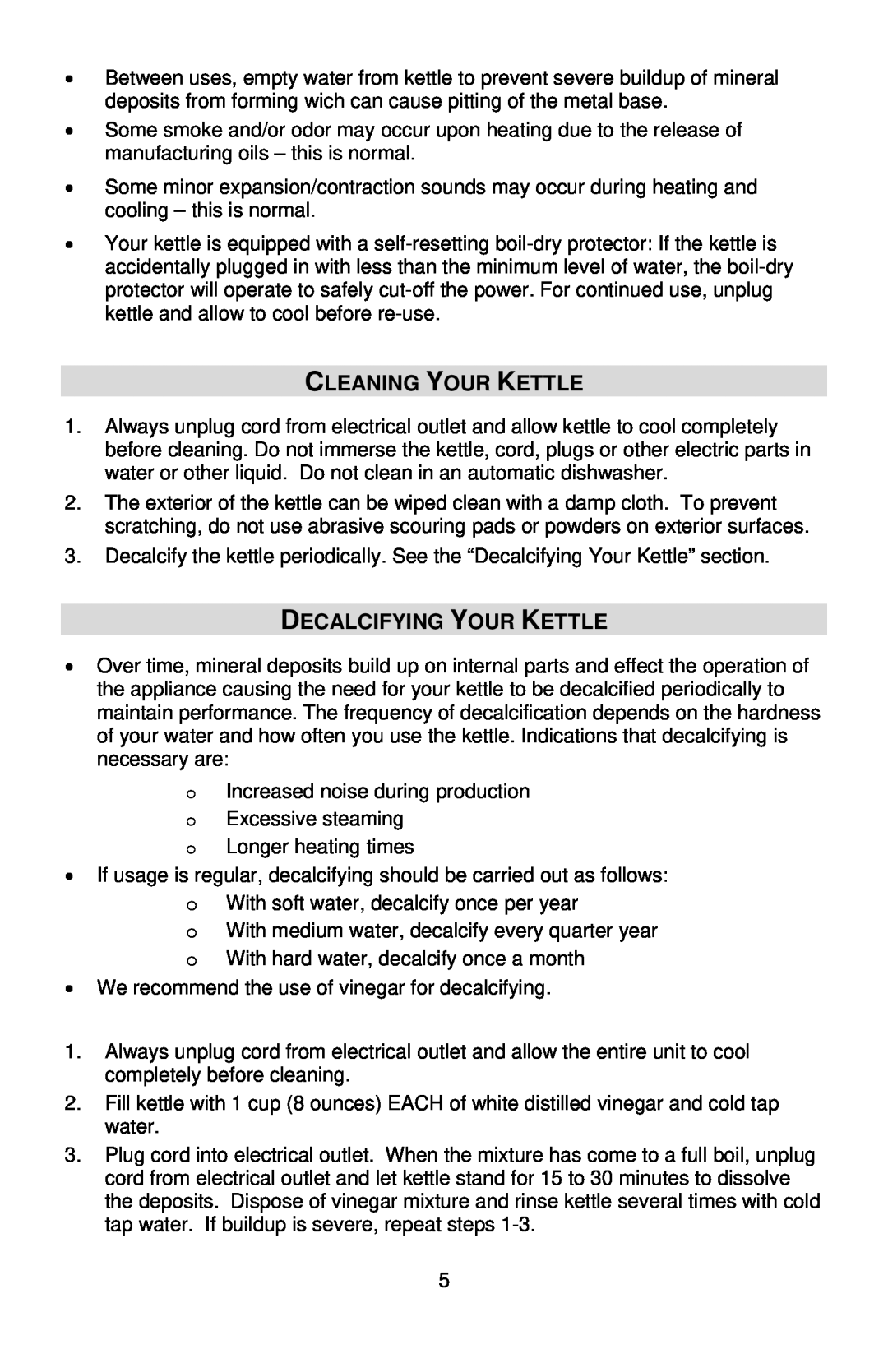
•Between uses, empty water from kettle to prevent severe buildup of mineral deposits from forming wich can cause pitting of the metal base.
•Some smoke and/or odor may occur upon heating due to the release of manufacturing oils – this is normal.
•Some minor expansion/contraction sounds may occur during heating and cooling – this is normal.
•Your kettle is equipped with a
CLEANING YOUR KETTLE
1.Always unplug cord from electrical outlet and allow kettle to cool completely before cleaning. Do not immerse the kettle, cord, plugs or other electric parts in water or other liquid. Do not clean in an automatic dishwasher.
2.The exterior of the kettle can be wiped clean with a damp cloth. To prevent scratching, do not use abrasive scouring pads or powders on exterior surfaces.
3.Decalcify the kettle periodically. See the “Decalcifying Your Kettle” section.
DECALCIFYING YOUR KETTLE
•Over time, mineral deposits build up on internal parts and effect the operation of the appliance causing the need for your kettle to be decalcified periodically to maintain performance. The frequency of decalcification depends on the hardness of your water and how often you use the kettle. Indications that decalcifying is necessary are:
oIncreased noise during production
oExcessive steaming
oLonger heating times
•If usage is regular, decalcifying should be carried out as follows:
oWith soft water, decalcify once per year
oWith medium water, decalcify every quarter year o With hard water, decalcify once a month
•We recommend the use of vinegar for decalcifying.
1.Always unplug cord from electrical outlet and allow the entire unit to cool completely before cleaning.
2.Fill kettle with 1 cup (8 ounces) EACH of white distilled vinegar and cold tap water.
3.Plug cord into electrical outlet. When the mixture has come to a full boil, unplug cord from electrical outlet and let kettle stand for 15 to 30 minutes to dissolve the deposits. Dispose of vinegar mixture and rinse kettle several times with cold tap water. If buildup is severe, repeat steps
5
